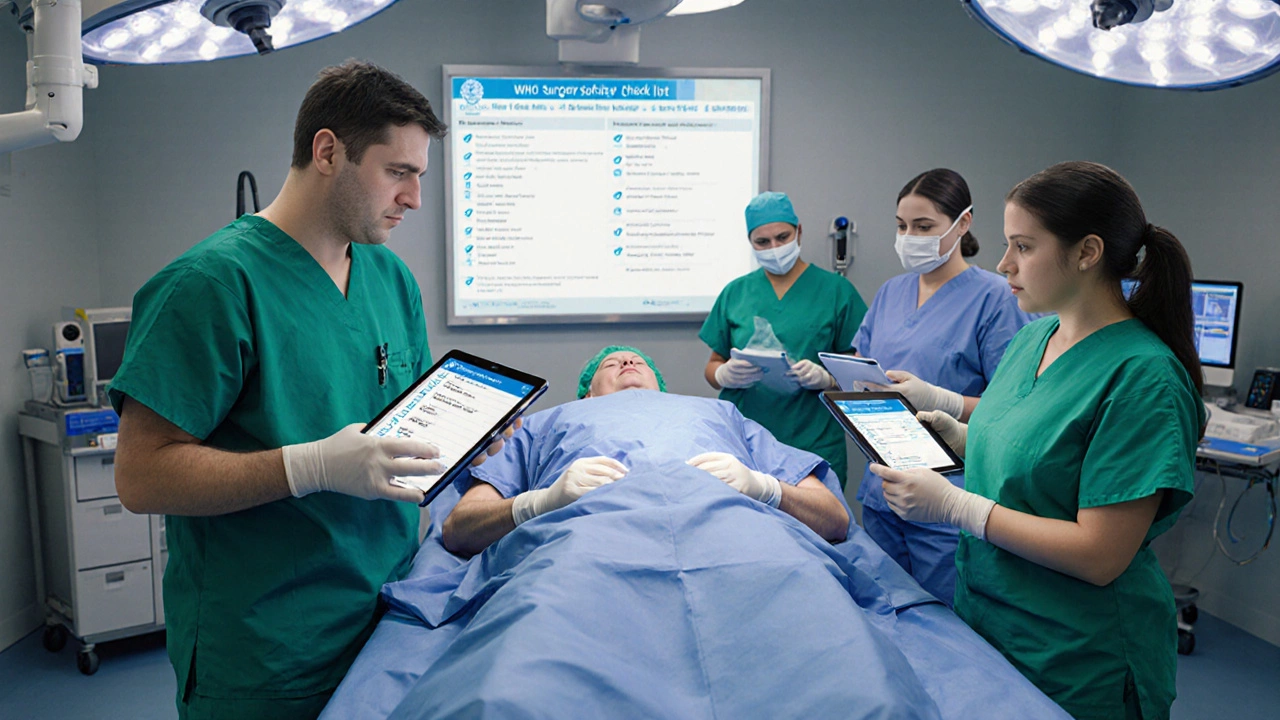Operating Room Protocol: What You Need to Know About Sterile Procedures and Safety
When you hear operating room protocol, a set of strict rules designed to keep surgeries safe and infection-free. Also known as surgical safety standards, it’s not just paperwork—it’s what keeps you alive during surgery. This isn’t about fancy hospitals or expensive gear. It’s about the simple, non-negotiable steps every nurse, surgeon, and technician follows before even touching a scalpel.
Think about sterile technique, the practice of keeping everything in the operating room free from germs. It’s why gloves are changed between tasks, why gowns are worn just once, and why no one talks over the patient’s body. One slip—a glove tear, a dropped instrument, a cough without a mask—can turn a routine procedure into a life-threatening event. Studies show that following protocol reduces surgical site infections by over 60%. That’s not a guess. That’s data from hospitals across India and beyond.
Infection control, the broader system that includes cleaning, waste handling, and staff training is just as critical. You can have the best surgeon in the world, but if the instruments aren’t sterilized right, or if the OR isn’t cleaned between cases, you’re playing Russian roulette with your recovery. That’s why hospitals in India now track every autoclave cycle and log every surface cleaned. It’s tedious, yes—but it’s the difference between going home in days and spending weeks in the ICU.
And it’s not just about the OR. Surgical safety, the full chain of care from pre-op checks to post-op monitoring starts long before you’re wheeled in. Did you know that over 70% of surgical errors happen because communication broke down? That’s why teams now use checklists—yes, like the ones pilots use—to confirm your name, your surgery, your allergies, and your consent. It’s not bureaucracy. It’s backup.
These rules exist because people have died from preventable mistakes. Not because surgeons were careless, but because systems failed. Today’s protocol fixes those gaps. It’s why a knee replacement patient in Delhi has a better chance of walking again without infection than a patient did ten years ago. It’s why your doctor asks you to shower with special soap the night before surgery. It’s why you’re asked to wear a cap and mask even if you’re just visiting the recovery area.
What you’ll find in the posts below isn’t a list of rules. It’s real stories—people who recovered from heart surgery, faced knee replacements, or dealt with unexpected complications—and how following or breaking protocol changed everything. Some of these stories come from patients who didn’t know what was happening behind the curtain. Others come from staff who saw the cost of cutting corners. Together, they show you why operating room protocol isn’t just hospital policy—it’s your lifeline.
-
16
Learn why the surgical safety checklist is the number one rule of surgery, how it safeguards orthopedic patients, and practical steps to implement it effectively.
